Click on images to enlarge
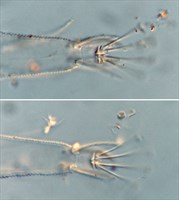
Fig. 1. Eutetranychus acaciae adult female paratype - detail of standard Eutetranychus ambulacra with empodium absent and lateral true claws reduced with pair of tenent hairs.
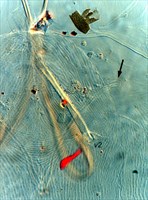
Fig. 2. Eutetranychus orientalis adult female (non-type; South Africa) - detail of the peritreme (arrow indicates tip).
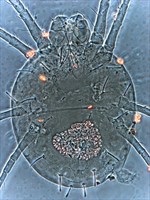
Fig. 3. Eutetranychus orientalis adult female (non-type; South Africa) - dorsal habitus, with short weakly spatulate central opisthosomal setae.
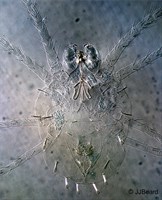
Fig. 4. Eutetranychus orientalis adult female (non-type; Australia) - dorsal habitus with short weakly spatulate central opisthosomal setae.
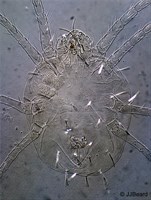
Fig. 5. Eutetranychus orientalis adult female (non-type; Australia) - dorsal habitus with short strongly spatulate central opisthosomal setae.
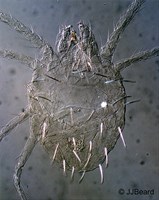
Fig. 6. Eutetranychus orientalis adult female (non-type; Australia) - dorsal habitus with long spatulate central opisthosomal setae.
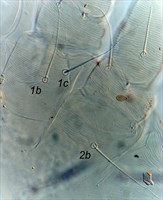
Fig. 7. Eutetranychus orientalis adult female (non-type; South Africa) - detail of number of setae on coxae I and II (note that seta 2c is absent).
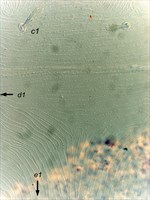
Fig. 8. Eutetranychus orientalis adult female (non-type; South Africa) - detail of pattern of striae on dorsal opisthosoma between setae c1-c1, d1-d1 (off screen) and e1-e1 (off screen, see Fig. 9).
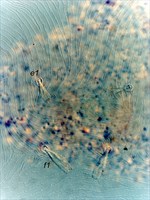
Fig. 9. Eutetranychus orientalis adult female (non-type; South Africa) - detail of pattern of striae on dorsal opisthosoma between setae e1 and f1.
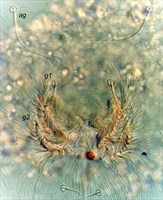
Fig. 10. Eutetranychus orientalis adult female (non-type; South Africa) - detail of pregenital striae.
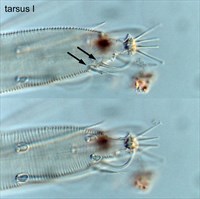
Fig. 11. Eutetranychus orientalis adult female (non-type; South Africa) - detail of the associated setae on tarsus I (same individual; arrows indicate the bases).
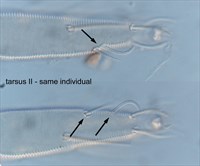
Fig. 12. Eutetranychus orientalis adult female (non-type; South Africa) - detail of the associated setae on tarsus II (arrows indicate the bases).
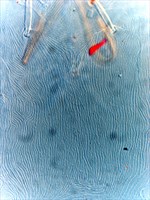
Fig. 13. Eutetranychus orientalis adult female (non-type; South Africa) - detail of pattern of striae on the prodorsum.
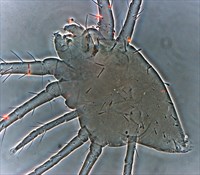
Fig. 14. Eutetranychus orientalis adult male (non-type; South Africa) - dorsal habitus.
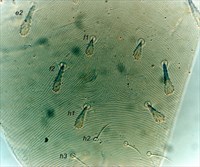
Fig. 15. Eutetranychus orientalis adult male (non-type; South Africa) - posterior dorsal opisthosoma.
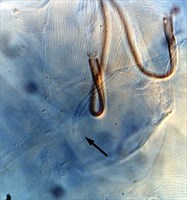
Fig. 16. Eutetranychus orientalis adult male (non-type; South Africa) - detail of the peritreme (arrow indicates tip).
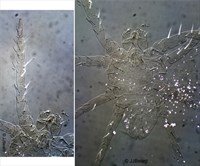
Fig. 17. Eutetranychus orientalis adult male (non-type; Australia) - detail of leg I much longer than body.

Fig. 18. Eutetranychus orientalis adult male (non-type; South Africa) - detail of the associated setae on tarsus I (arrow indicates bases).
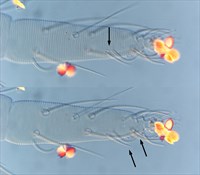
Fig. 19. Eutetranychus orientalis adult male (non-type; South Africa) - detail of the associated setae on tarsus II (same individual; arrows indicates setal bases and tips).
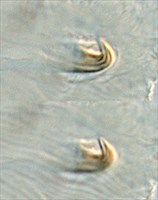
Fig. 20. Eutetranychus orientalis adult male (non-type; South Africa) - detail of the aedeagus at different focal points (same individual).
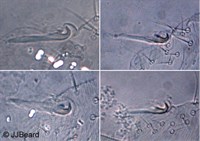
Fig. 21. Eutetranychus orientalis adult male (non-type; Australia) - details of the aedeagus.
Material examined
non-types
Taxonomy
Subfamily Tetranychinae
Tribe Eurytetranychini
Common Name
Oriental red mite, Oriental mite, Citrus brown mite
Distribution
+Australia, Afghanistan, Caper Verde Islands, China, Cyprus, Egypt, Ethiopia, Hainan Island, Hong Kong, India, *Iran, Iraq, *Israel, Japan, Jordan, Kenya, Kuwait, Lebanon, Malawi, Malaysia, Mali, Mauritania, Mozambique, Nigeria, Pakistan, Philippines, Saudi Arabia, Senegal, South Africa, Sudan, Taiwan, Thailand, Tunisia, Turkey, UAE, Vietnam, Yemen
Taxonomy Changes
Anychus orientalis Klein 1936
Eutetranychus orientalis (Klein) Baker & Pritchard 1960
Anychus ricini Rahman & Sapra 1940, synonymy Baker & Pritchard 1960
Eutetranychus monodoi Andre 1954, synonymy Meyer 1987
Eutetranychus sudanicus El Badry 1970, synonymy Meyer 1987
Eutetranychus anneckei Meyer 1974, synonymy 1987
Diagnosis
Female (Figs 1-3)
- empodium absent, with only lateral true claws reduced to short pads each with pair of tenent hairs (Fig. 1)
- peritreme ending in simple weakly expanded bulb (Fig. 2)
- dorsal opisthosomal setae vary in length and shape, from short weakly to strongly spatulate setae (Figs 3-5) to long spatulate setae (Fig. 6)
- coxae I with two setae (1b, 1c) and coxae II with one seta (2b present; 2c absent) (Fig. 7)
- dorsal opisthosoma with transverse striae between c1-c1 and d1-d1, oblique-longitudinal striae d1-d1 to e1-e1, transverse e1-e1 to h1-h1 (Figs 8, 9)
- pregenital striae transverse to weakly arching around genital flap (Fig. 10)
- tarsus I and II with associated setae (not duplex setae) - the tactile seta is (almost) as long as the solenidion, and the bases of the two setae are not coalesced (Figs 11, 12)
- prodorsum with fine longitudinal striae, with small but distinct lobes (Fig. 13)
- chaetotaxy for legs I-IV (n.b. expression of solenidia is variable):
- coxae 2, 1, 1, 1
- femora 8, 6, 3-4, 1-2
- genua 5, 5, 2, 2
- tibiae 10-13(1-4+0), 6-8(0-2+0), 6-7(0-1+0), 7
- tarsi 18(3+3), 14-15(1-2+3), 11(1+0), 11(1+0)
- brownish green with orange legs and gnathosoma
Male
- empodia as in female (see Fig. 1)
- dorsal setae as in female (Figs 14, 15)
- peritreme as in female with simple weakly expanded bulb (Fig. 16)
- prodorsum as in female with longitudinal striae
- leg I much longer than body (Fig. 7)
- tarsus I and II as in female, with associated setae (Figs 18, 19)
- chaetotaxy for legs I-IV:
- coxae 2, 2, 1, 1
- femora 8, 6, 4, 1
- genua 5, 5, 2, 2
- tibiae 13-14(4-5+0), 8(2+0), 6-8(0-2+0), 7
- tarsi 17(2+3), 15(2+3), 11(1+0), 11(1+0)
- aedeagus dorsally directed, short stout hook at right angle or acute angle to shaft, tapered to blunt tip (Figs 20, 21)
- brownish orange, with orange legs and gnathosoma
Hosts
>150 reocrded species of host plant, with Citrus spp. being the main hosts of economic importance; full host list includes: Acacia modesta, A. nilotica, Albizia harveyi, Al. lebbeck, Al. procera (Mimosaceae), Ananas comosus (Bromeliaceae), Annona squamosa (Annonaceae), Bambusa ventricosa (Poaceae), Bauhinia purpurea, B. variegata (Caesalpinaceae), Callistemon lanceolatus (Myrtaceae), Calotropis gigantea, C. procera (Asclepiadaceae), Cannabis sativa (Cannabaceae), Cassia fistula, Ca. fruticosa, Ca. holosericea, Ca. occidentalis, Ca. siamea (Caesalpinaceae), *Citrus sp., Citrus aurantium, Ci. grandis, Ci. jambhiri, Ci. karna, Ci. limon, Ci. paradisi, Ci. reticulata, Ci. sinensis (Rutaceae), Cocos nucifera (Arecaceae), Cucumis melo , Cucurbita maxima, Cu. moschata, Cu. pepo (Cucurbitaceae), Durio malaccensis, D. zibethinus (Bombacaceae), Ficus burkei, F. carica, F. macrophylla, F. palmata, F. religiosa, F. retusa (Moraceae), Grewia asiatica, G. mollis, G. tenax, G. villosa (Tiliaceae), Hedera japonica (Araliaceae), Hevea brasiliensis (Lauraceae), Ipomoea batatas (Convolvulaceae), Lantana camara (Verbenaceae), Malus domestica (Rosaceae), Manihot esculenta (Euphorbiaceae), Morus alba, M. nigra (Moraceae), Nerium indicum, N. oleander (Apocynaceae), Passiflora sp. (Passifloraceae), Persea americana (Lauraceae), Phoenix dactylifera, P. dealbata (Arecaceae), Plumeria acutifolia, P. alba, P. indica(Apocynaceae), Prunus domestica, P. dulcis, P. persica (Rosaceae), Psidium guajva (Myrtaceae), Pyrus communis, P. pyrifolia (Rosaceae), Ricinis communis (Euphorbiaceae), Rosa sp. (Rosaceae), Saccharum officinarum (Poaceae), Solanum melongena, S. nigrum (Solanaceae), Terminalia catappa (Combretaceae), Trema orientalis (Ulmaceae), Zea mays (Poaceae)
Similar Taxa
Eutetranychus africanus (Tucker, 1926)
Eutetranychus orientalis has one seta on coxae II; Eu. africanus has two setae on coxae II (according to literature).
Biology
Listed as major pest of citrus (Meyer 1974, Gerson 2003).
Oriental red mites feed on the upper surface of leaves, but they do move to ventral surface when present in high numbers. Feeding causes pale-yellow stippling along the midrib and lateral veins of leaves, which becomes greyish or silvery when feeding is severe. Severe infestations can result in leaf necrosis, branch die back and rind damage to the fruit. Host trees suffering from water stress suffer more than healthy hosts. Very little visible webbing is produced, and is usually only associated with the eggs.
Females lay their eggs on the upper leaf surface, usually along the midvein. As with mobile stages, eggs can be found on the ventral surface when the mites are present in high numbers. Depending on temperature, eggs hatch in 4 to 6 days, and usually become adults in 8-11 days.
Severe infestations seem to occur in autumn and winter in subtropical to tropical climates.
References
Andre, M. (1954) Tetranyque noveau, parasite de Cassia siamea Lam. et Grewia millis Juss. a Dakar. Bull. Inst. Fr. Afr. Noire, (ser. A) 16: 859-861
Baker, E.W. and Pritchard, A.E. (1960) The tetranychoid mites of Africa. Hilgardia 29: 455-574
+Davis, J.J. (1968f) Survey of Tetranychidae. Item 12 Qld. Dept. Agric.
El Badry, E.A. (1970) A new species of tetranychid mite from Sudan (Acarina: Tetranychidae). Rev. Zool Bot. Afr. 82: 301-305
*Klein, H.Z. (1936) Contributions to the knowledge of the red spiders in Palestine. I. The oriental red spider, Anychus orientalis Zacher. I. The common red spider, Epitetranychus althea v. Hainstein. Bull. Israel Agric. Res. Stn. Rehovot 21: 3-36 and 21: 37-63
Meyer, M.K.P. Smith (1987) African Tetranychidae (Acari: Prostigmata) with reference to the world genera. Entomology Memoirs, Department of Agriculture and Water Supply, Republic of South Africa 69: 1-175
Rahman, K.A. and Sapra, A.N. (1940) Mites of the family Tetranychidae from Lyallpur with descriptions of four new species. Proceedings of the Indian Academy of Science, Ser. B 11: 177-196
+Walter, D.W., Halliday, R.B. and Smith, D. (1995) The oriental red mite, Eutetranychus orientalis (Klein) (Acarina: Tetranychidae), in Australia. Journal of the Australian Entomological Society 34: 307-308
Copyright © 2018. All rights reserved.